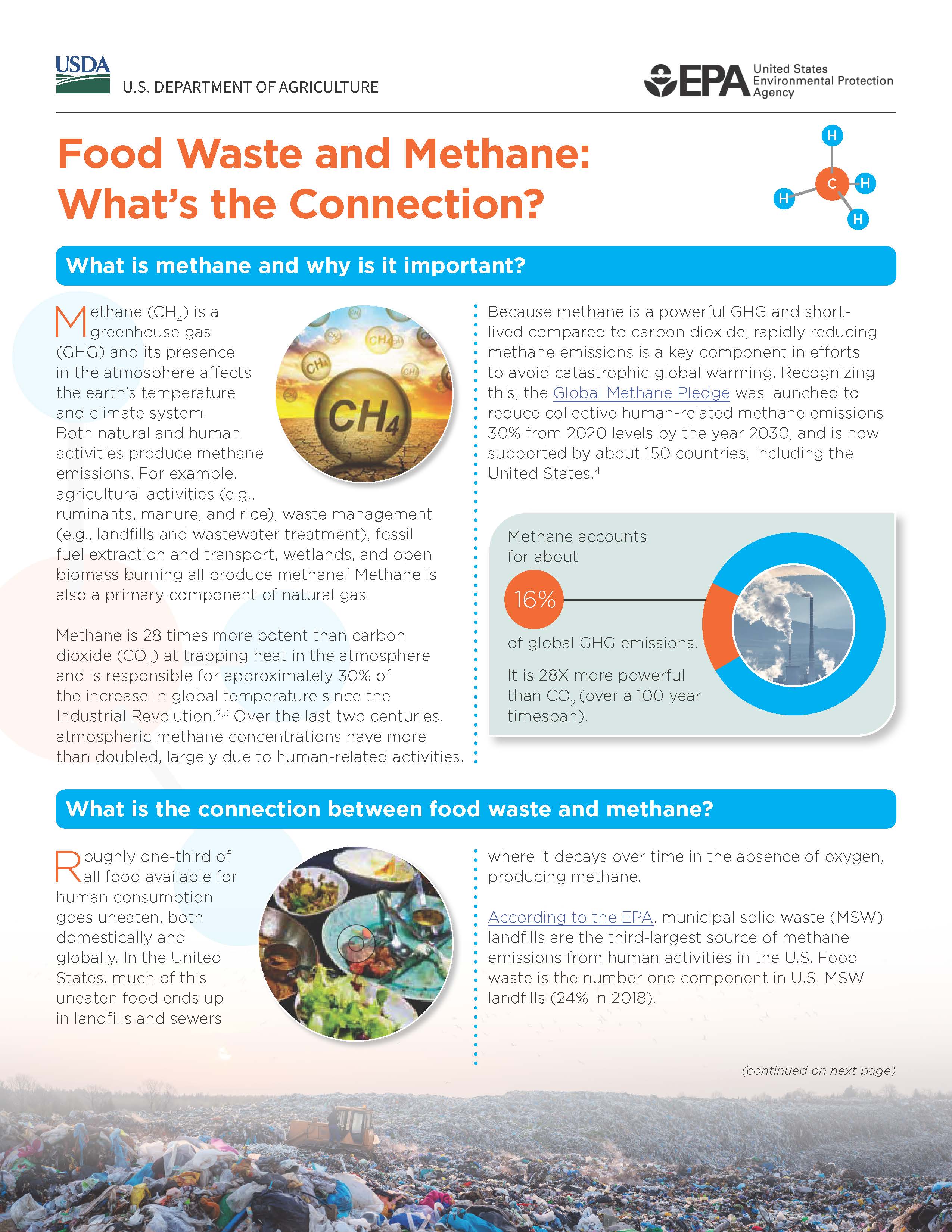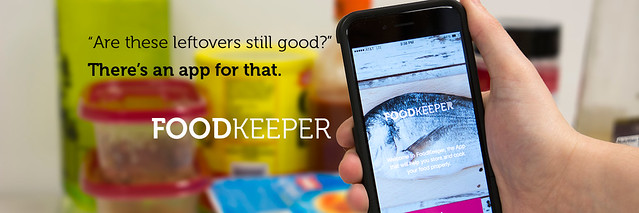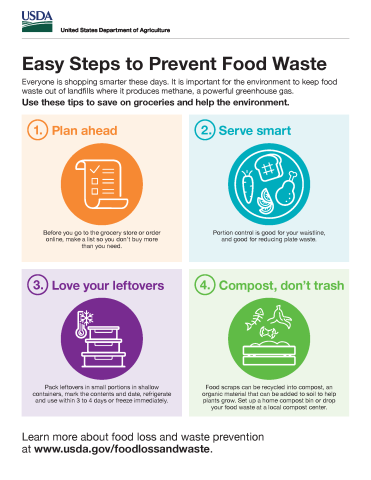- Food Loss and Waste
- Why should we care about food waste?
- National Strategy for Reducing Food Loss and Waste and Recycling Organics
- Federal Interagency Collaboration to Reduce Food Loss and Waste
- U.S. Food Loss and Waste 2030 Champions
- USDA Activities and Partnerships
- Farmers
- Businesses
- Consumers
- Schools
- Donating
- Funding
- Frequently Asked Questions
- Latest News and Multimedia
- Videos
- Contact Us
Each year, the average American family of four loses $1,500 to uneaten food. USDA offers a range of advice to help Americans reduce food waste, which in turn increases household food budgets and makes nutritious diets more affordable.
Download this infographic and share these easy steps to reduce food waste at home.
Infographic: Easy Steps to Prevent Food Waste (PDF, 97.8 KB)
Chinese language version of Easy Steps to Prevent Food Waste (PDF, 254 KB)
Spanish language version of Easy Steps to Prevent Food Waste (PDF, 244 KB)
Infographic: More Easy Steps to Prevent Food Waste (PDF, 128 KB) (Spanish (PDF, 130 KB))
Infographic: Food Labeling: Is This Still Good to Eat (PDF, 132 KB) (Spanish (PDF, 135 KB))
Easy Steps to Prevent Food Waste (PNG, 76.0 KB)

Did you know that decomposing food waste releases methane, a potent greenhouse gas (GHG) with higher warming potential than CO2? To learn more, check out the new USDA and EPA factsheet, Food Waste and Methane: What’s the Connection? (PDF, 2.1 MB)
Videos, Soundbites and b-roll
NEW! Who Cares About Reducing Food Waste? (YouTube)
USDA Tips to Reduce Food Waste at Home (YouTube)
With every meal, you can take steps to save food, save money, and protect the environment. Dr. Jean Buzby, USDA Food Loss and Waste Liaison, offers easy steps to help reduce food waste at home.
Soundbites and b-roll: USDA Tips to Reduce Food Waste at Home (YouTube)
Video/Soundbites and b-roll: USDA Tips to Reduce Food Waste at Home (Vimeo)
Plan Ahead to Reduce Food Waste (YouTube)
Plan Ahead to Reduce Food Waste (YouTube) Spanish Version
Serve Smart to Reduce Food Waste (YouTube)
Serve Smart to Reduce Food Waste (YouTube) Spanish Version
Love Your Leftovers (YouTube)
Love Your Leftovers (YouTube) Spanish Version
Compost to Reduce Food Waste (YouTube)
Compost to Reduce Food Waste (YouTube) Spanish Version
Food Waste Composting Resources
Did you know that food is the single largest category of material sent to municipal solid waste landfills? Food in landfills generates methane, a harmful greenhouse gas. You can help the environment by recycling your food waste into compost, which produces relatively less methane. Learn more with these resources.
Composting Fact Sheet (PDF, 620 KB) | Composting Fact Sheet Spanish (PDF, 882 KB) | Composting Fact Sheet (JPG, 489 KB)
USDA Blog, May 7, 2021: Composting Uneaten Food: An Interview with Frank Franciosi from the U.S. Composting Council | USDA
Other Resources
Understand food date labels – Manufacturers provide date labels to help consumers and retailers decide when food is of best quality. Except for infant formula, dates are not an indicator of the product’s safety, and are not required by federal law. With the exception of infant formula, if the date on a food product passes during home storage, it should still be safe and wholesome if handled properly, until spoilage is evident. Spoiled foods will develop an off odor, flavor, or texture due to naturally occurring spoilage bacteria. If a food has developed such spoilage characteristics, it should not be eaten. For more information about date labels, please see the fact sheet from the USDA (PDF, 132 KB) (Spanish (PDF, 135 KB)).
Download the FoodKeeper App – The FoodKeeper app provides guidance on safe handling, preparation, and storage of more than 650 food and beverage items. With the app, you can track storage times for different foods, learn cooking tips, and get safety recall alerts. Users can set up calendar reminders for when products are nearing their recommended storage date. The app is available free for download and also via desktop at FoodSafety.gov.

Reorganize your refrigerator and pantry – Food is less likely to go bad when you use older items first. Keep your pantry and refrigerator clean and organized so you can see what needs to be eaten first. In the fridge, extend the life of your food by putting it in the right place. For example, do not store perishable foods in the door. The temperature in the refrigerator door fluctuates more than the cabinets or the back of the unit.
Cool quickly and freeze the excess – Safely storing and preparing food helps keep you and your family healthy and reduce food waste. Find additional freezer facts from FDA.
Love your leftovers – Give leftovers a makeover when you reuse them in recipes. Add broccoli stems to a salad or blend overripe fruit into a low-fat smoothie. Keep leftover safety in mind.
Eating out? At restaurants, order only what you can finish. Ask about portion sizes and be aware of side dishes included with entrees. Take the leftovers home and keep them for your next meal. At all-you-can-eat buffets, take only what you can eat. Learn more from the USDA report America’s Eating Habits: Food Away From Home.

Since the early 20th Century, USDA has advised consumers about food waste.
Contact Us:
Dr. Jean Buzby
USDA Food Loss and Waste Liaison
jean.buzby@usda.gov


